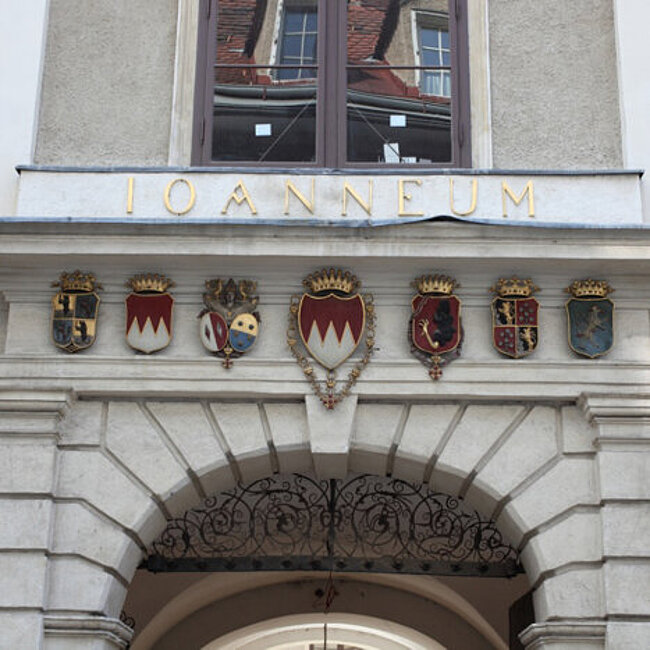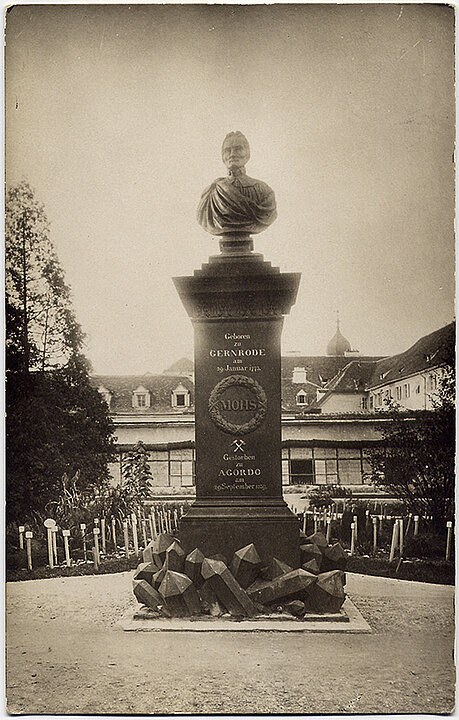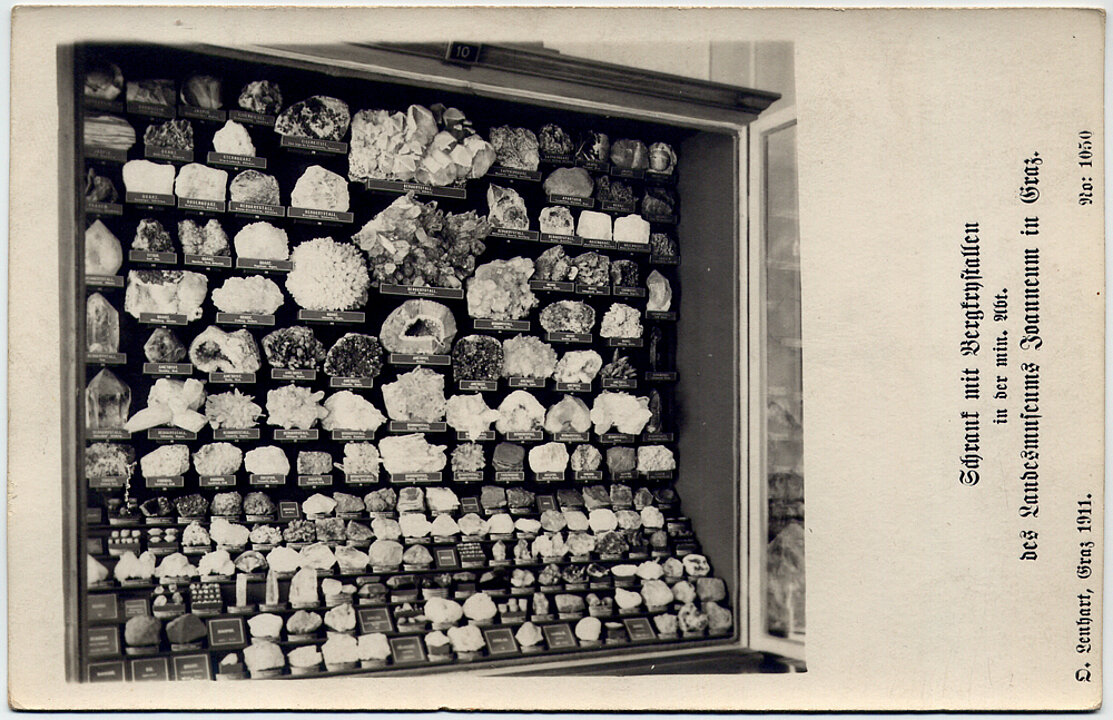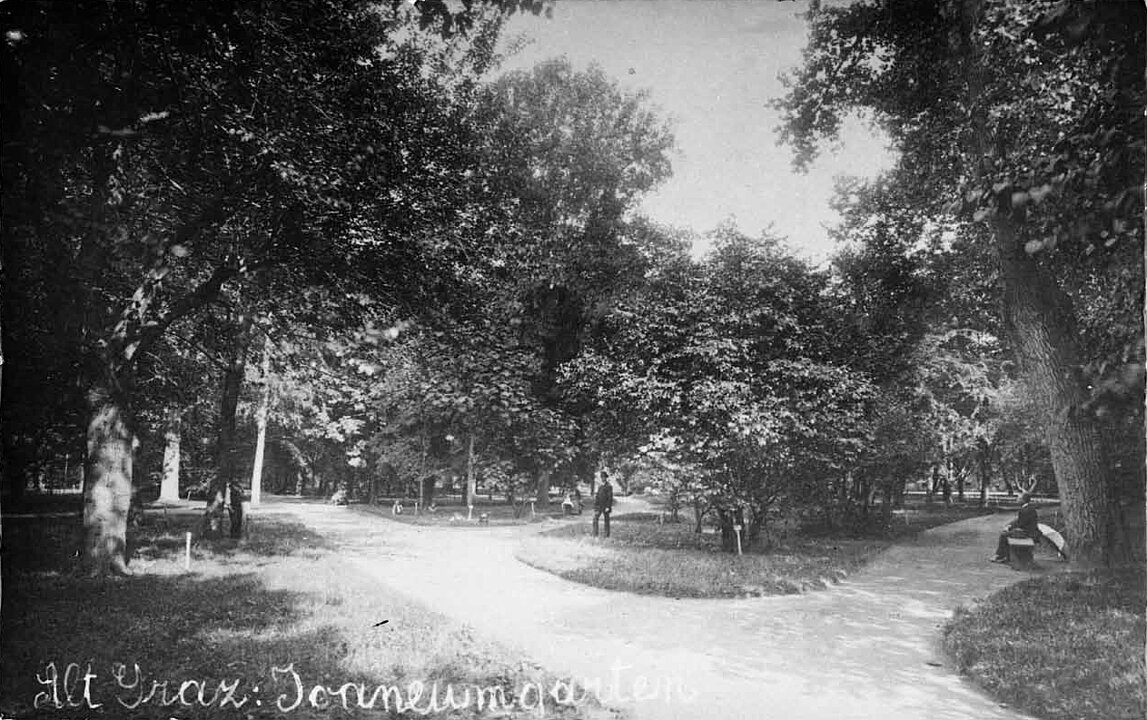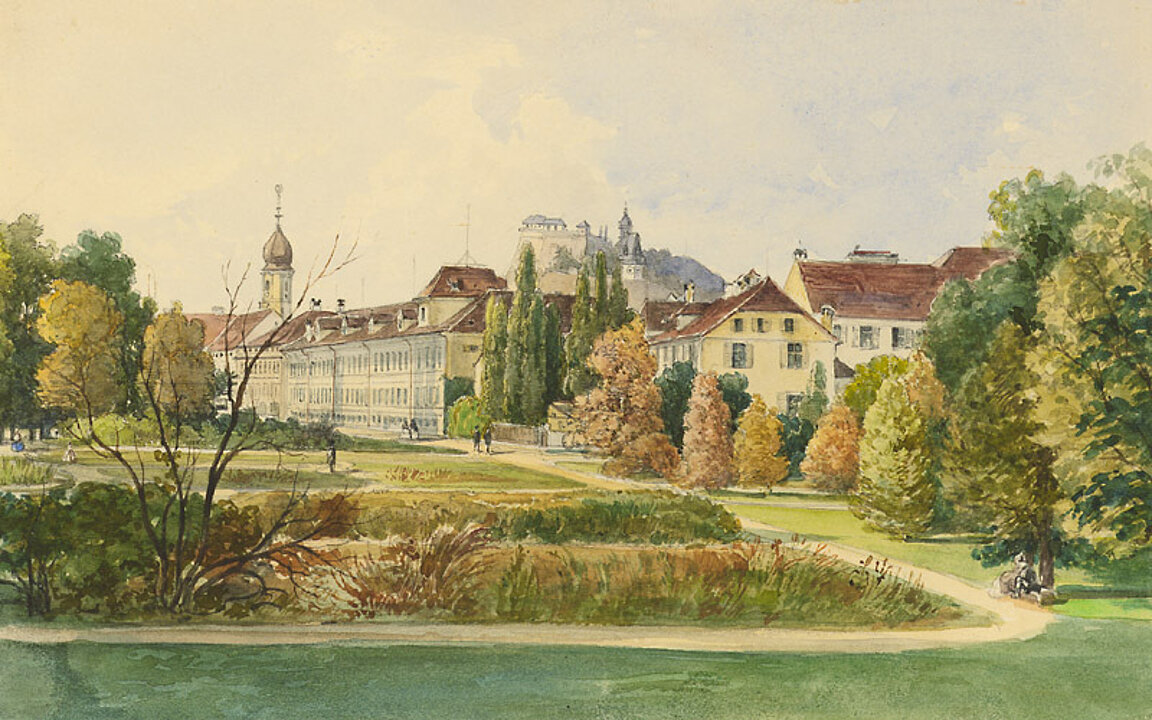As early as 31 January 1809 John communicated his plans in a letter to his brother, Emperor Franz I.. He wanted to build a museum from the "collections given by me", whereby "to promote the education of the youth of Styria" was his clearly expressed intention.
Originally, the project was to be implemented in Innsbruck, but this was not possible for political reasons. On the other hand, John was already looking for a house in Graz in 1808 to house his library and other valuable collections.
In 1811, Archduke John's revolutionary idea of combining a scientific and technical educational institution with a museum became reality in Graz.
The Lesliehof in what is now Raubergasse 10 in Graz - a palace built by the Graubünden architect Domenico Sciassia in the 1670s as a monastery courtyard for the monastery of St. Lambrecht - was chosen as the location. The Styrian estates acquired the building from Prince Dietrichstein and handed it over to Archduke John.




















